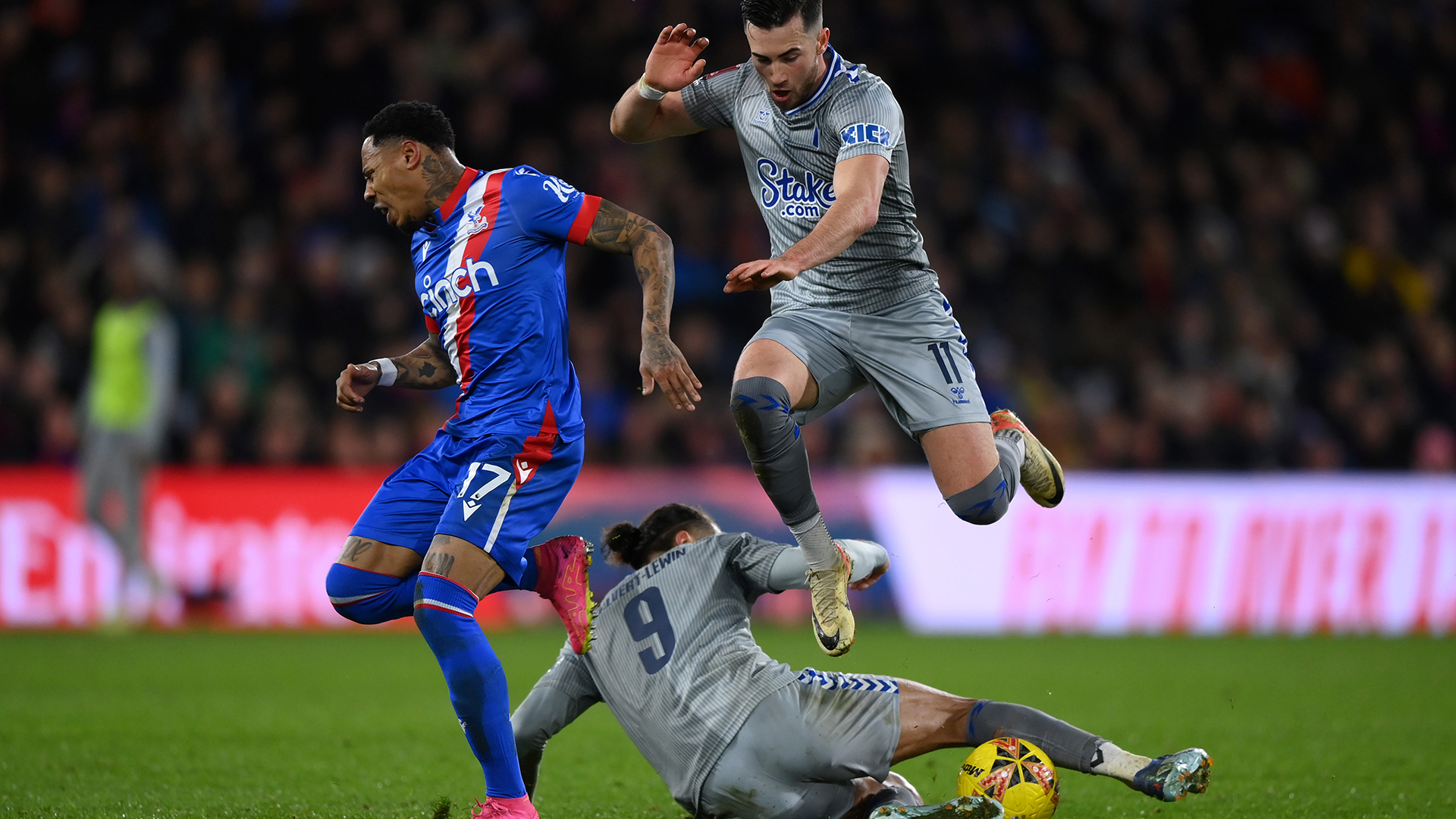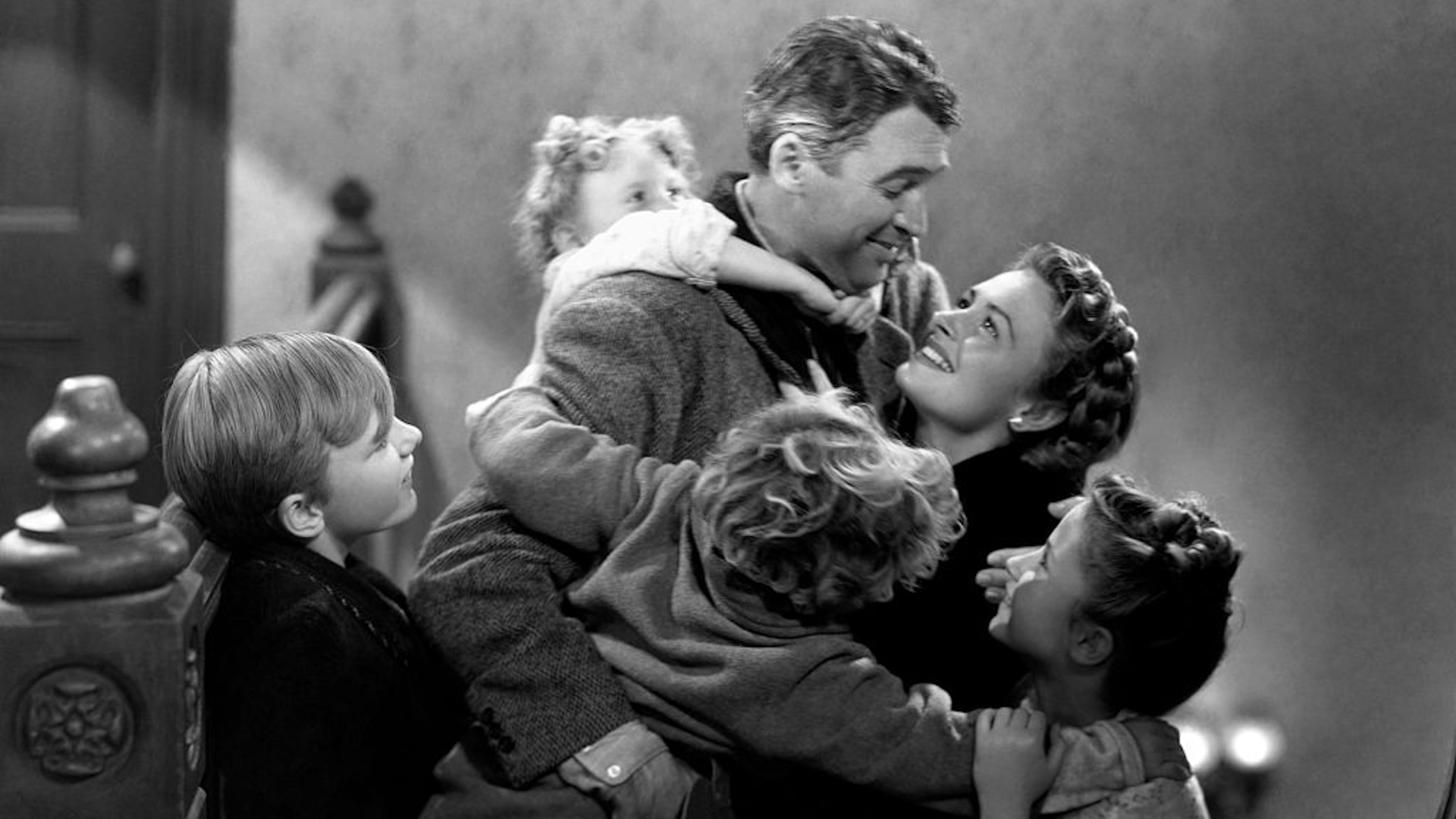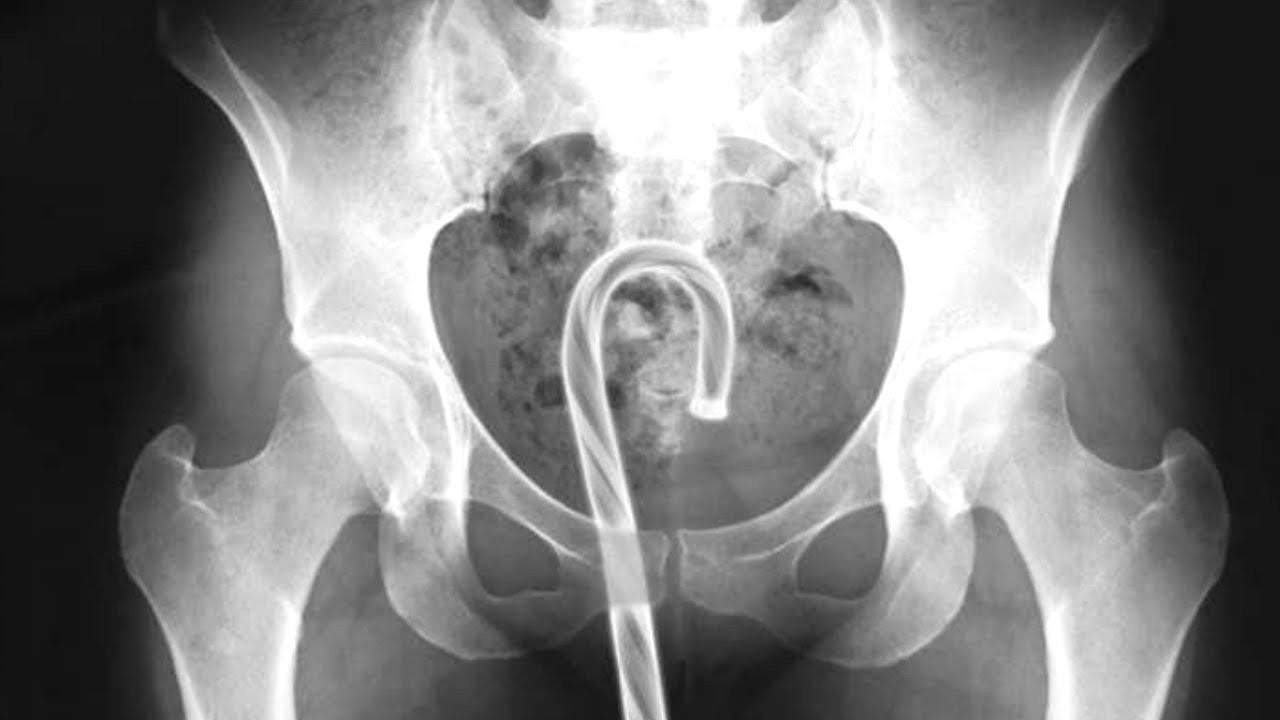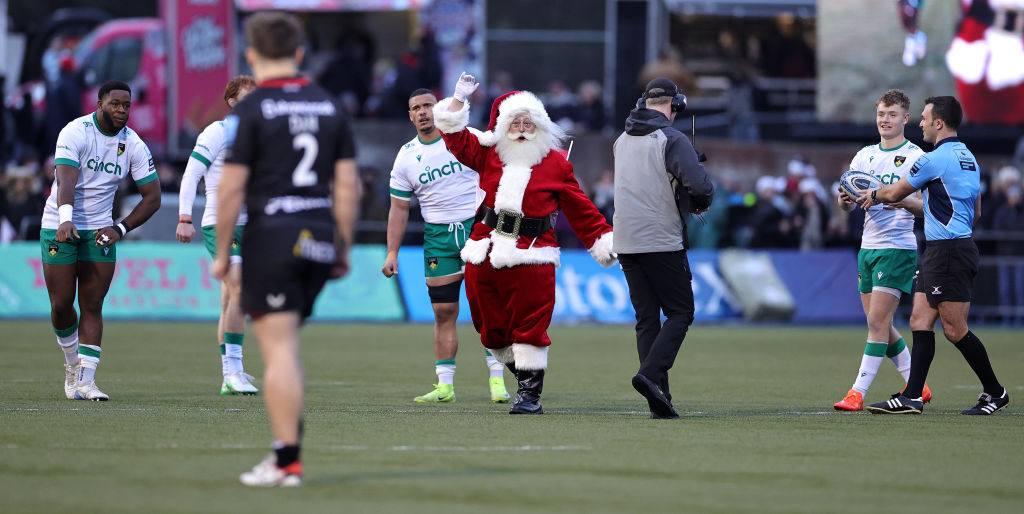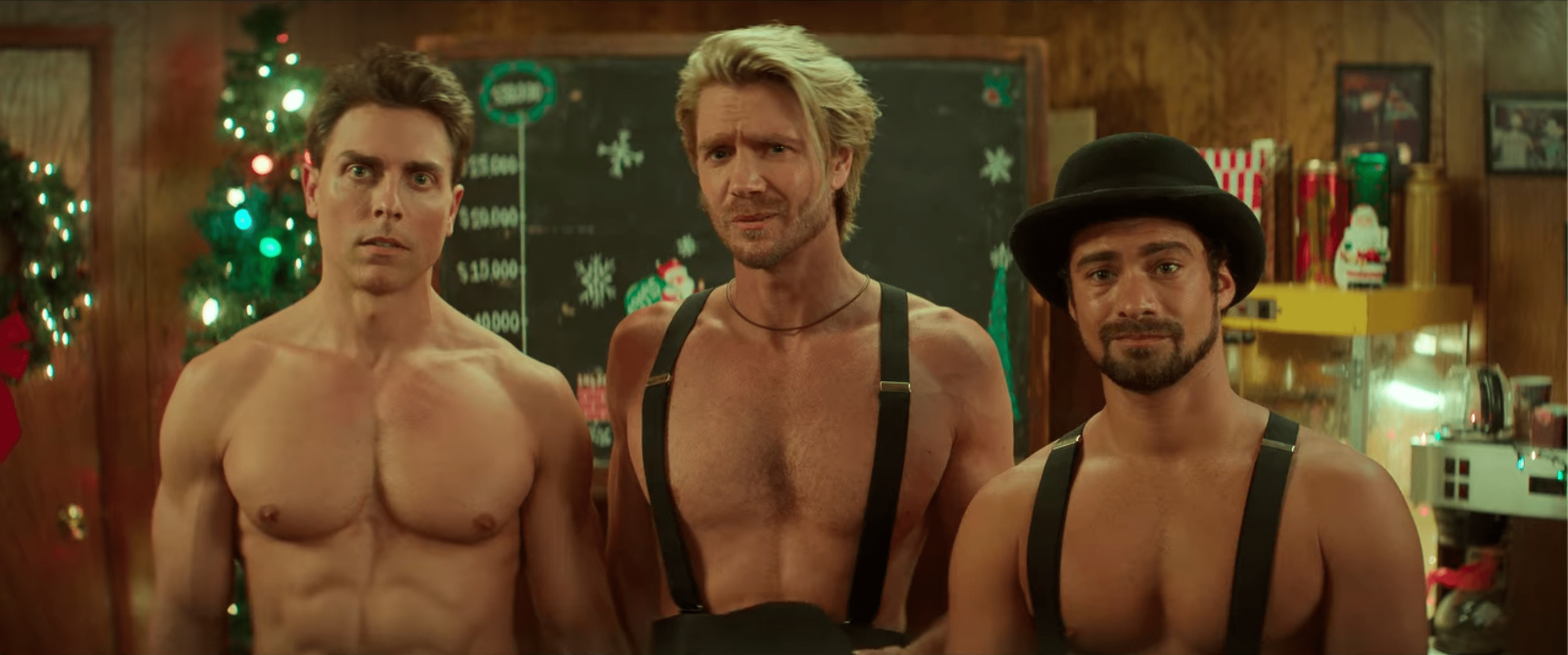It's hard to care much about a third-round FA Cup tie when you have no rooting interest in either club playing. Sure, if you are an Everton (hi Tom Ley) or Crystal Palace fan, Thursday's matchup at Selhurst Park was easy to get up for, but for everyone else, it might have been something you had on a second monitor while working. That's the situation I found myself in until the 76th minute, when a slide-tackling Dominic Calvert-Lewin's foot barely grazed Nathaniel Clyne's shin while going for a loose ball. On paper, the incident doesn't sound particularly intriguing, and even on replay, it was at most a yellow card, and everyone should have moved on with their lives.
Unfortunately, nothing is quite so simple in the age of the Video Assistant Referee. After an excruciating pause in which various slow-motion angles seemed to confirm that this was not a particularly egregious challenge, the replay officials asked referee Chris Kavanagh to give the incident another look, after which Kavanagh perplexingly gave Calvert-Lewin a red card.
I'm going to start by giving VAR the benefit of the doubt here. Calvert-Lewin does go into the tackle studs up, and he does appear to make contact (albeit minor) with Clyne on the way through to the ball. In the loosest definition of the rule, that could be a red card. The problem here is that even on the slowest replays, the foul in no way rises to the necessary level of "serious foul play" or "violent conduct," as the English FA's very own rules stipulate.
This is where the subjectivity of soccer's governing rules clashes with VAR's standard of purported objectivity. It's a problem that comes up most frequently with handballs, where the video referees must make a judgement call on whether a player's arms were in an "unnatural position" or not, but it coats every big decision in its toxic sludge. In Calvert-Lewin's situation, it's even more nebulous, because there's no scenario in which those replays display anything beyond a minimal grazing. Because of that, the matter becomes not so much about the act itself, but rather the interpretation of the act.
The argument for a red card relies on the intent of a studs-up tackle. Calvert-Lewin went in with only one foot, rather than making one of the more consistently red-carded two-footed challenges. There's no explicit rule that a studs-up one-footed tackle is an automatic red, so it becomes a judgement call on whether it was enough to qualify for the aforementioned "serious foul play." Watch it again: Calvert-Lewin isn't running at full speed, he aims for the ball, and only barely nicks Clyne.
The referee was yards away from this and didn't even give a foul.
— Tony Scott (@Tony_Scott11) January 4, 2024
Yet someone miles away sat in a box room who doesn't understand the game of football properly thought it'd be an idea to take charge of the game instead of the official. Football in 2024.pic.twitter.com/sNgtzQRoSP
It would be one thing if a referee saw the tackle in live time and gave a red card, but that's not what happened here. Kavanagh, who had a decent view of it on the field, didn't even signal for a foul when it happened, and it was only after VAR intervened in his headset that he paused play to look at it. It's fine if that's what VAR is meant to be, a way to re-referee every decision with the benefit of video replay. It's not, though; VAR is supposed to be used as an assistive tool to correct glaring errors of fact that the refs on the field may not have been able to spot. Even after seeing all of the replay angles, can anyone really argue that Kavanagh made a clear and obvious mistake in not initially showing Calvert-Lewin a red card?
That's subjectivity, and someone might be as vehement that the tackle deserved a red card as I am that it didn't. It's all inconsistent, though, isn't it? This is a useless thought experiment, but take a ride with me anyway: If this foul is shown to 100 referees in real-time, how many give a red card? Now show this to 100 referees in slow motion. Does that number rise significantly enough to make all of this worth it? I'm not sure the answer is yes, given the last decade or so of VAR implementation, particularly in the Premier League. Everton manager Sean Dyche had the same thought, though he was more considered in his response to the incident, saying "[a]t the end of the day, there’s contact, it’s minor contact, live time he doesn’t give anything, slows it down and everything looks worse in slow-mo, we all know that."
Everton clearly feels the same way. Following the 0-0 draw, the club filed an appeal to the FA to rescind Calvert-Lewin's red card, which carries with it a three-game ban. Despite the foul occurring in the FA Cup, the striker would serve his ban across that tournament and the Premier League, which would see him miss the Crystal Palace replay and two league matches. Given that the league hit Everton with a 10-point deduction earlier this season, it's important for the team to be as close to full strength as possible in domestic play, even if the Toffees have been much better than expected this season.
Personally, I am tired of writing blogs about VAR's insidious effect on modern soccer, but it keeps obstructing the simple pleasures of watching a soccer match. Even the most ardent VAR supporters (do those exist anymore?) should be able to acknowledge a reality that soccer has struggled with since VAR's implementation: The rules were never meant to be applied in slow motion. Some rules have been changed to accommodate the use of VAR, such as the armpit rule for handballs, but at the end of the day, anything beyond an objective decision—offside decisions are the most consistent with VAR, if also sometimes the most frustrating; no one is happy when a goal is disallowed because a player was a couple pixels offside, but at least that's closer to true objectivity—requires a combination of judgement and technology, the balance of which has not yet been satisfactorily figured out. The players don't play in slow motion, so why should the referees?
